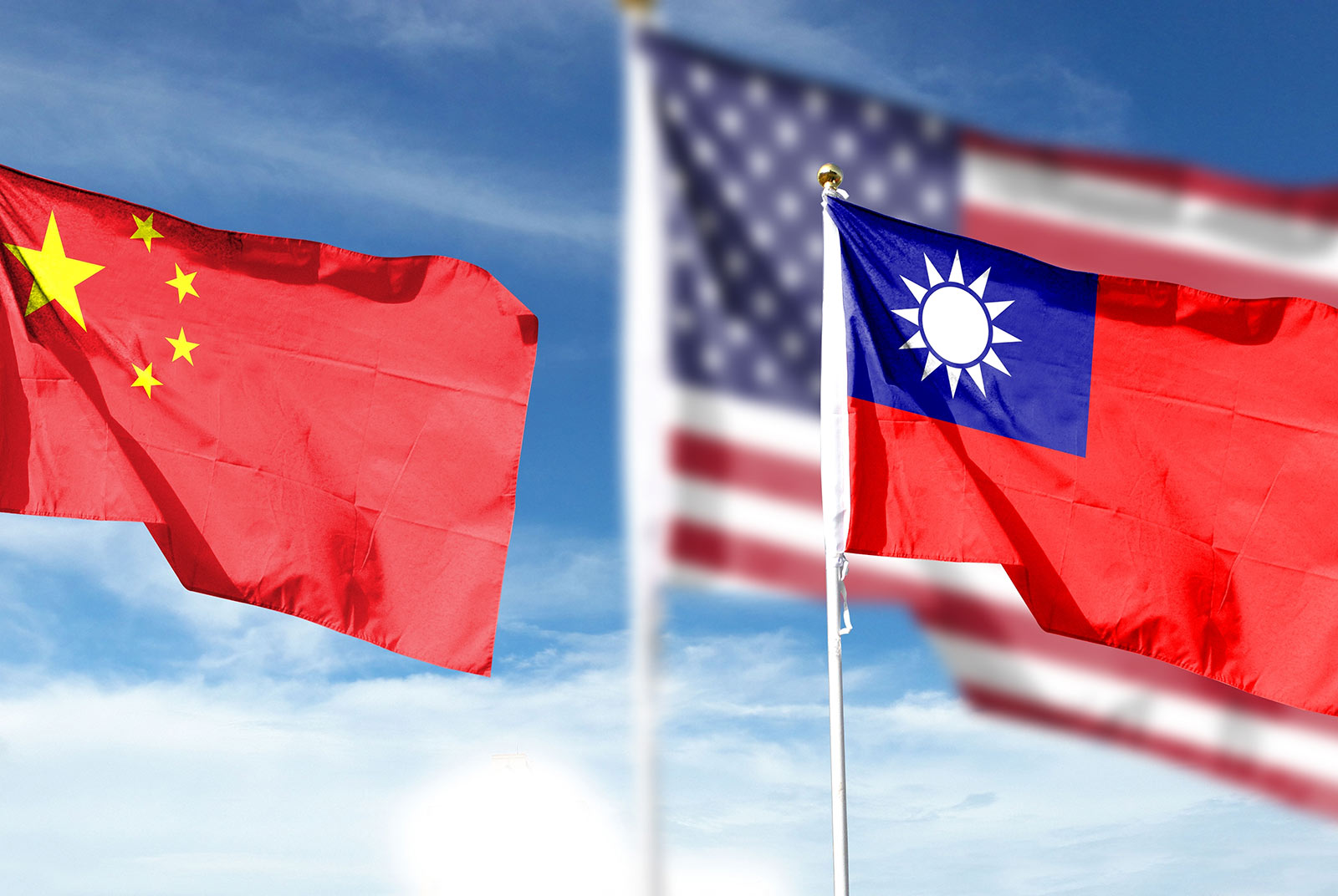What's next for India-Taiwan relations: deciphering India's studied silence

Source:shutterstock
While cross-strait tensions between China and Taiwan escalated, political support around the globe poured into Taiwan. But some countries remained silent, including India. In this op-ed, Dr. Kumari Mansi, an international relations scholar, analyzed why. What kind of cooperation can we expect between India and Taiwan?
Views
What's next for India-Taiwan relations: deciphering India's studied silence
By Kumari Mansiweb only
The less-than-24-hr visit to Taiwan of U.S. House Speaker Nancy Pelosi early August 2022 unfurled what many scholars have referred to as the “fourth Cross-Strait Crisis”. This short trip by the second most senior American politician has sent ripples across the world as the possibility of invading Taiwan for eventual reunification by mainland China now seemed more plausible than ever.
After conducting almost, a week long unprecedented live military drills around Taiwan in response to the Pelosi visit, China published its 3rd White Paper titled "The Taiwan Question and China's Reunification in the New Era," on 11th Aug, 2022 to reiterate that “Taiwan is part of China” and to demonstrate the resolve of the CCP for national reunification. The white paper's release seemed like a warning for Taiwan and its allies, mainly the United States that the mainland is now much stronger to solve the Taiwan problem which the PRC considers a renegade province.
As the world community is already grappling with an actual war going on in Ukraine, the regional escalation and the Chinese power projection in the geostrategic Taiwan Strait paint a grim picture not just for the Indo-Pacific Region but for global economic and military security.
This ongoing Crisis is starkly different from the previous three in terms of its scale and magnitude. For the first time, China crossed the median line and has made its intention clear that it will continue holding such exercises. The Chinese military manifested an ability to encircle the island and cut off the Taiwan Strait, one of the world’s busiest trade routes, and impose blockades, thus crippling not just the Taiwanese economy but the world’s economy. Ever since, China has continued its joint military maneuvers on a daily basis and crossing the median line has become a “new normal”.
The Foreign Minister of China reiterated its “One China Policy”. Notwithstanding China’s warning, a number of parliamentary delegations have poured into Taiwan from across the world in solidarity with the island nation, showing strength and resilience in the face of constant threats from China to engulf the democratic existence of Taiwan.
India’s studied silence
As the event unfolded in the Taiwan Strait, India initially maintained its silence and refrained from making any comments. Ten days after the beginning of the crisis, India called for “exercise of restraint, avoidance of unilateral actions to change the status quo, de-escalation of tensions and efforts to maintain peace and stability in the region” on 12th of August 2022.
However, India did not refer to either China or Taiwan or the so-called “One China policy”. “India’s relevant policies are well known and consistent. They do not require reiteration,” said the MEA spokesperson. .
However, on August 27, in a rare instance and departure from previous statements, India for the first time referred to Taiwan and accused China of “militarization of the Taiwan Strait” amid a spat with China over the visit of Yuan Wang 5, Chinese military tracking vessel, to the strategically located Hambantota port in Sri Lanka. This sharp response by India came in response to the article by the Chinese ambassador to Sri Lanka, where he remarked that Sri Lanka faced “aggression” from its “northern neighbour” 17 times, apparently referring to India. The Indian mission in Sri Lanka slammed the ambassador’s remarks, saying they may be “reflecting a larger national attitude”.
This uncharacteristically direct response from India reflects India’s growing irritation with Chinese assertiveness in not just India’s backyard but also in the broader Indo-Pacific, to which Taiwan is an inalienable part.
The initial silent treatment of this issue by India has been interpreted in different ways and has even been criticised by experts and observers. There have been calls for sending Indian parliamentary delegations to Taiwan and suggestions that India should rethink its “One China policy” and make political overtures towards Taiwan, which can give India a leverage vis-à-vis China. However, any reference to using Taiwan as leverage or playing a “Taiwan card” is utterly naive and an oversimplification of complex dynamics between the actors involved; India, China and Taiwan.
Deciphering India’s studied silence
India’s response to the whole ‘Taiwan Issue’ needs to be put in historical perspective of India’s relations with the Republic of China. ROC established relations with non-state India, represented by Indian National Congress and led by Jawaharlal Nehru, during late 1930s. Both India and the ROC were fighting the imperial forces at that time and shared a strong anti-imperial stand, which solidified the camaraderie between Nehru (who was going to be India’s first Prime Minister post independence) and Chiang Kai-shek. However, in the wake of the new-geopolitical reality, namely KMT’s defeat and the establishment of PRC, India switched recognition to PRC in Dec 31, 1949. It took four decades to re-establish ties, albeit non-diplomatic ones, between India and Taiwan in 1995.
A close study of these four decades reveal that India and the ROC shared completely different worldviews inimical to continuing the people-to-people ties which existed before 1949 or forging new ties. From ideological differences (where India led the non-aligned movement and ROC belonged in the American camp) to divergences over the Korean War, Tibet and the erstwhile North-East Frontier Agency (NEFA) region, overshadowed the anti-imperial camaraderie shared between Nehru and Chiang Kai-shek. Various structural and domestic factors constrained the overture between India and Taiwan during the Cold War.
However, the “Look East Policy” (now the Act East Policy), India's regional outreach strategy, enunciated in early 1990s to re-engage with East Asia after the end of Cold War, provided the much needed platform for India-Taiwan rapprochement. In 1995, both sides established representative offices in their respective capitals. In the absence of diplomatic ties, the relations have been mostly economic, cultural and educational, which has seen upward trajectory under the BJP government in India and the DPP government in Taiwan.
Despite the growing engagement, India’s position on the Taiwan issue has remained ambiguous. India was among the first countries to recognize there is one China and has adhered to the One China policy since 1949.
However, since the 2010 India-China joint communique, India has not mentioned One China policy in its official documents in retaliation to China not respecting the “One India policy” and India’s sovereignty in the Indian province of Arunachal Pradesh and Jammu and Kashmir.
The studied silence of India on Taiwan can be put into this historical context where the legacy of Chiank Kai-Shek’s ROC still form a part of Taiwan’s existence. When it comes to taking a stand against China on the Taiwan issue, India's strategic community may be concerned by Taiwan's lack of adherence to the One India policy and its refusal to acknowledge India's claim to Arunachal Pradesh (which China claims as its own). When India granted statehood to the former North-East Frontier Agency in 1987, Taiwan formally issued a statement condemning the Indian government. What’s more, many Chinese territorial claims on the border and in the South China Sea were actually initially proposed by the Chiang Kai-shek regime. His stance on the McMohan line—the contentious India–China border—also coincided with the PRC policy. The inaccurate map of India map on the Ministry of Foreign Affairs (MOFA) of Taiwan website serves as an example of this legacy. This is a sensitive issue and needs to be addressed.
The India-Taiwan relations have always been in the shadow of China, however the changing dynamics of India-China relations, which according to India’s External Affairs Minister Jaishankar, is “not normal” as the situation on border is not normal. It offers opportunity for both parties to re-think the transactional nature of the existing bilateral ties, where India sees Taiwan as a source of mandarin language and Chinese studies; and for Taiwan, India is a destination for trade and investment. India is now more assertive and confident when it comes to its territorial integrity and it has made clear that China can not expect India’s support for its One China principle unconditionally.
Although it seems unlikely that India will recognize Taiwan diplomatically, India's political influence and support for Taiwan in the international fora will undoubtedly boost Taiwan's international space. On the other hand, the economic and technological clout of Taiwan can bring in trade and investment to India.
Together, India and Taiwan can work towards building resilient economies. Furthermore, both parties can collaborate on non-traditional security spaces like cyber or space security and environment. As two democratic entities, both have the potential to forge meaningful ties and promote peace, prosperity and stability in the region.
(This piece reflects the author's opinion, and does not represent the opinion of CommonWealth Magazine.)
About the Author:

Dr. Kumari Mansi is the recipient of the Ministry of Education Short Term Research fellowship undertaking research on India-Taiwan relations post 2014 at National Chengchi University, Taiwan. She is Assistant Professor at Amity University Haryana, India. Prior to that, she worked with the School of Foreign Languages, Ministry of Defense, India.
Have you read?
- Why does Lithuania support Taiwan?
- Taiwanese democracy is an international glimmer of hope
- Time to leverage the pull- factor to attract more foreigners in Taiwan
Uploaded by Ian Huang






